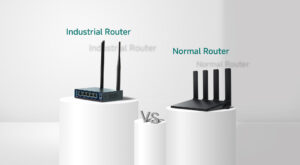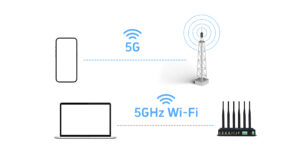The rise of Industry 4.0 and smart manufacturing has increased demand for flexible, reliable, and intelligent communication solutions in industrial automation. Traditional wired communication methods, such as fieldbus and industrial Ethernet, face limitations in distance, installation complexity, and maintenance costs.
Serial to Cellular Modems have emerged as a game-changing solution, enabling wireless communication over 4G/5G networks. These devices enhance connectivity, reliability, and remote management while reducing infrastructure costs. This article explores how serial-to-cellular modems are transforming industrial automation.
Enhancing Communication Flexibility and Eliminating Wiring Constraints
Traditional industrial communication relies on wired connections with strict limitations:
- Ethernet cables typically max out at 100 meters.
- RS-232 serial communication is limited to ~15 meters.
- RS-485 serial communication extends up to 1,200 meters but suffers from electromagnetic interference (EMI) and complex wiring.
Serial to Cellular Modems overcome these challenges by:
✔ Wireless 4G/5G connectivity, eliminating the need for physical cables.
✔ Extending communication range to several kilometers, ideal for remote sites, mobile equipment, and temporary installations.
✔ Surpassing Wi-Fi limitations (which only covers 100-300 meters outdoors) without terrain restrictions.
This flexibility simplifies deployment and reduces installation costs in industrial environments.
Improving Reliability in Harsh Industrial Conditions
Industrial sites often face:
- Electromagnetic interference (EMI)
- Extreme temperatures
- Dust and moisture exposure
Serial-to-cellular modems address these with industrial-grade rugged designs resistant to harsh conditions. They feature automatic reconnection and data buffering to prevent loss during network fluctuations, along with retransmission mechanisms that ensure continuous operation. These features make them ideal for mission-critical applications where downtime is unacceptable.
Enabling Remote Monitoring and Reducing Maintenance Costs
Manual on-site maintenance is costly and time-consuming. Serial-to-cellular modems enable real-time remote monitoring of device status and network performance through cloud-based management systems. This capability allows for firmware updates, configuration changes, and troubleshooting without physical access, significantly reducing maintenance costs and downtime while improving operational efficiency. This minimizes the need for physical inspections, lowering operational expenses and improving efficiency.
Accelerating Industrial IoT (IIoT) and Smart Manufacturing
By bridging legacy serial devices with modern cloud platforms, these serial to cellular modems enable real-time data collection for analytics and AI-driven decision making. They support predictive maintenance, energy optimization, and process automation – key components in the transition to Industry 4.0 and smart manufacturing.
By integrating with IIoT ecosystems, these modems help industries transition to Industry 4.0.
Lowering Deployment and Operational Costs
Wireless cellular communication eliminates:
✔ Expensive cabling and conduit installation.
✔ Labor-intensive maintenance of wired networks.
Businesses can choose from 4G, 5G, NB-IoT, or LoRa based on coverage and bandwidth needs, optimizing cost-efficiency.
Conclusion
Serial-to-cellular modems are transforming industrial automation by replacing wired connections with flexible wireless alternatives that maintain reliability in challenging environments. Their remote management capabilities reduce operational costs while supporting the advancement of IIoT and smart manufacturing initiatives. As Industry 4.0 continues to evolve, these devices will play an increasingly vital role in industrial communication infrastructure.
As Industry 4.0 expands, these devices will become even more critical for seamless, cost-effective, and intelligent industrial communication.


